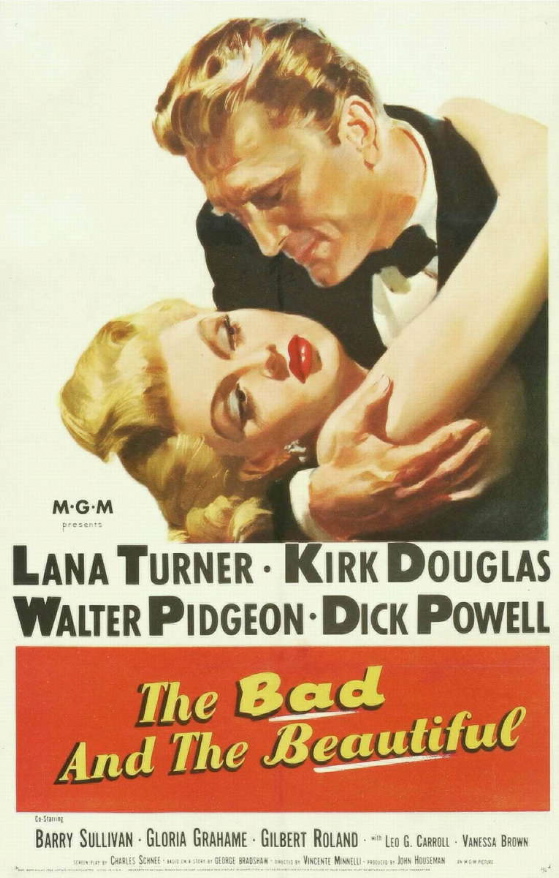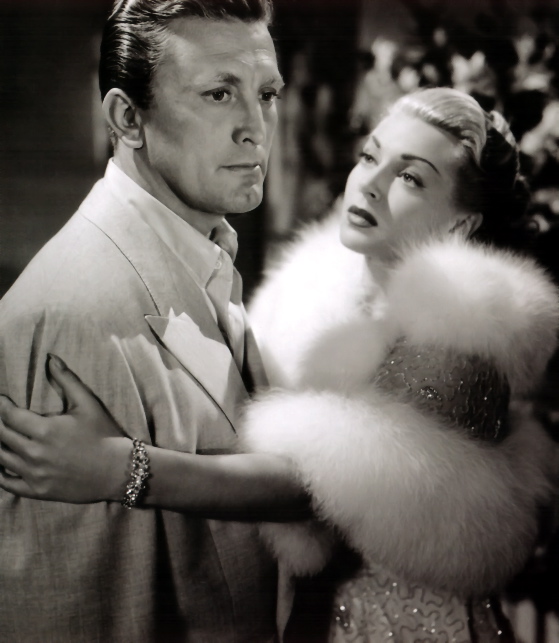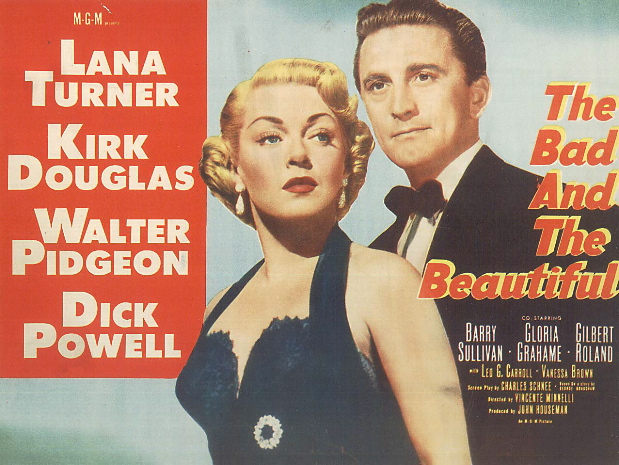
The Bad and the Beautiful is sometimes called a film noir but it's nothing of the sort — it's a romantic soap opera whose stylistic “darkness” is purely aesthetic and whose thematic “darkness” derives from simple perversity. A true film noir presents the image of a morally chaotic universe, a universe in which moral choices are either unclear or existentially useless — The Bad and the Beautiful glamorizes evil and asks us to love it.
The Bad and the Beautiful is the only film ever made about Hollywood which manages to capture its peculiar culture of perversity. Hollywood, in the classic studio era, was not about money. Given the fact that the major studios had a virtual monopoly over film distribution, money was a given. Movies were a rigged game. It wasn't about power, either — power was also a given, a consequence of all that money. And it wasn't about sex — money and power guaranteed sex, not only for the beautiful people who paraded their wares in front of a camera but for the nerdy little businessmen who organized the parade.
The coin of the realm in Hollywood was brutality and betrayal . The ability to hurt other people, especially one's friends and allies, with impunity was the one entitlement that signified genuine status in Hollywood. It was the only behavior that had a lasting and enduring glamor there.

The Bad and the Beautiful is about (and also part and parcel of) the sentimental myth created in Hollywood to lend a romantic flavor to the puerile exercise of brutality and betrayal — by insisting that it was all for art, for the good of the picture, for the good of the public. This myth was meant to disguise the fact that brutality and betrayal had an erotic charge in Hollywood, that it constituted a kind of moral pornography — that it existed for its own sake.
In a world of total material and sensual satiation, moral perversity was the only thing still capable of delivering a charge. It was the sort of charge that attaches to a child killing an insect or a small animal, to high school kids tormenting an outsider into suicidal despair, to the enslavement and torture and destruction of helpless people by governments.
Simone Weil wrote, “Brutality,
violence, and inhumanity have an immense prestige that schoolbooks hide
from children, that grown men do not admit, but that everyone bows
before.” This insight is the key to Hollywood's culture, and to The Bad and the Beautiful. For The Bad and the Beautiful is not about money, not about power, not about sex — not even about filmmaking or Hollywood per se. Its emotional climaxes, its juice, come from moments of lurid, glamorized, unrepentant brutality and betrayal.

One might say the same for most of Greek drama, of course, and much of Shakespeare. The difference is that The Bad and the Beautiful calls down no retribution from Olympus, from the inexorable workings of fate. In Sophocles as in Shakespeare, the frisson of moral perversity is part of the entertainment, but there is a price to be paid. In the perpetual adolescence of Hollywood, so brilliantly evoked in The Bad and the Beautiful, no price is exacted — except a kind of emptiness, that money and power and celebrity and Oscars can't fill up. There is that kind of emptiness at the heart of The Bad and the Beautiful, but it's not acknowledged. The film is a perfect paradigm of true spiritual despair — a despair that is unaware of itself.

Well stated. Though I would only add that the despair at the heart of Minnelli's film did eventually arrive full-force, resulting in the disorientation and madness of 1962's 'Two Weeks in Another Town', which may be that rarest of things: A sequel in spirit, if not in fact.
That said . . . bravo!
Thanks, Tom! I'm dying to see “Two Weeks In Another Town” — infuriating that it's not yet on DVD.